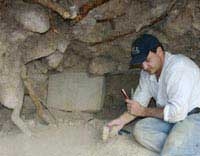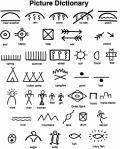It turns out that the seemingly worthless piece of wood hides an unexpected secret.
While collecting firewood, a man in Hunan Province, China, stumbled upon a rotten log by the roadside. He decided to take it home to use for firewood. As he approached, he noticed that the log was half-buried in the ground. After digging it up, he saw that it had a greenish hue inside and was heavier than normal. He thought to himself that he would wash it off when he got home.
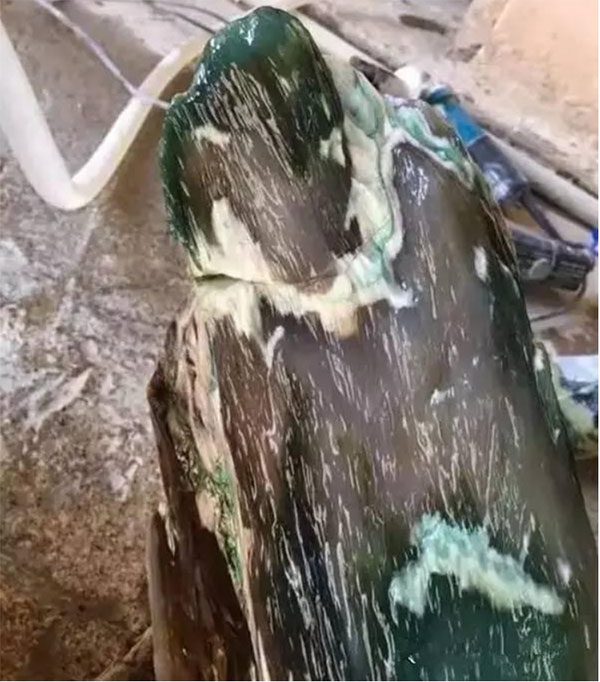
After being cleaned and cut, the log revealed a jade-like green color. (Photo: Sohu)
Unexpectedly, after being washed and cut, the originally rotten log transformed. It looked like a jade stone shaped like a log. The man was confused; was what he found a piece of wood or stone?
When the villagers heard that someone had found a peculiar rotten log, they gathered to see it. Everyone was amazed, and debates arose about its nature. Some claimed it was a fossilized piece from a certain type of tree. Others suggested it was valuable jade. Even some superstitious individuals believed it was an omen and tied a red string around it for protection. Subsequently, the villagers advised him to consult an expert for evaluation and identification.
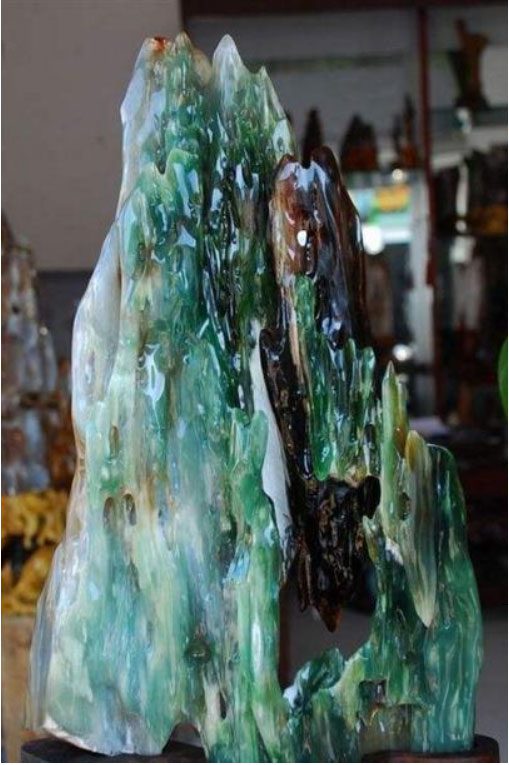
The man decided to take the “log” to the city for expert appraisal. (Photo: Sohu)
The man was determined to take the log to the city for appraisal. The expert informed him that it was not jade but natural petrified wood. What is petrified wood?
According to the expert, the phenomenon of petrified wood is a remarkable occurrence in nature. This process occurs over millions of years underground and creating a piece of petrified wood is extremely rare, akin to being as valuable as gold.
Petrified wood originates from ancient forests that, after a volcanic eruption, were buried in lava for millions of years and gradually turned to stone.
In areas where dead trees are covered by various minerals from volcanic eruptions, these minerals permeate the wood’s vascular structure. As the wood’s structure gradually breaks down, the wood fibers are replaced by inorganic minerals such as quartz, opal, and chalcedony.
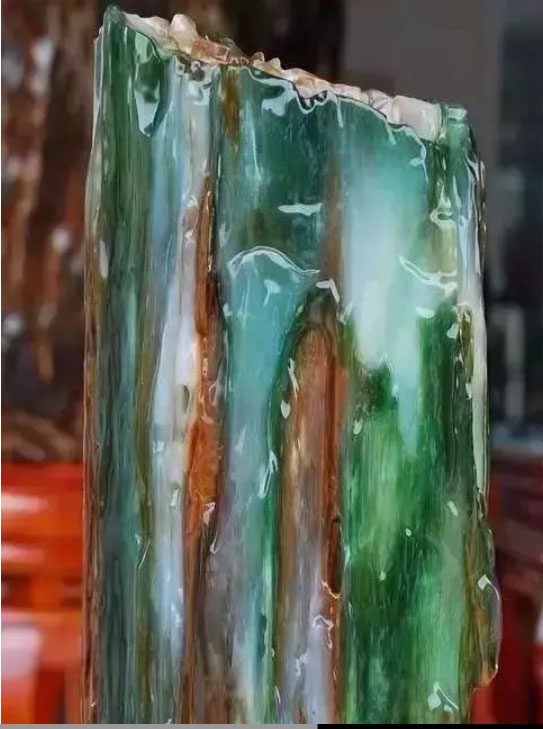
“The petrified wood” dates back 200 million years. (Photo: Sohu)
These petrified tree trunks primarily date back to the Triassic and Jurassic periods, approximately 100 million to 250 million years ago. Essentially, petrified wood undergoes a process similar to that of fossilized bones. This process occurs continuously, and depending on the minerals replaced, different types of petrified wood with varying properties and hardness are formed.
Western theologians believe that what was originally a rotten piece of wood, after undergoing the process of quartzification, transforms into a type of gemstone; thus, fossilized wood possesses durable, long-lasting, and eternal magnetic properties.
The colors of petrified tree trunks are also diverse: gray and brown are the most common, while red, orange, yellow, black, and the rarest being jade green can also be found.
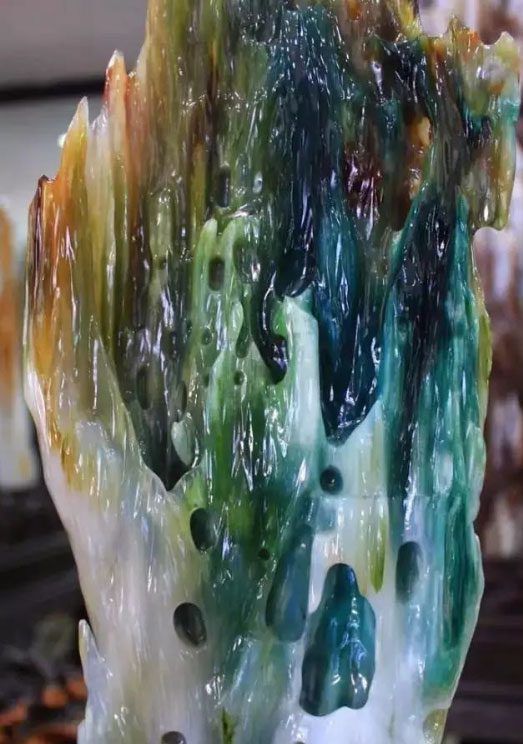
Petrified wood is classified as a gemstone and has high economic value. (Photo: Sohu)
Since ancient times, such as in Assyria, Babylon, and ancient Rome, petrified wood has been used as ornamental stone. From petrified wood, people create beads, rings, pendants, and carvings. Since the 19th and 20th centuries, petrified wood from Arizona has been crafted into small tables, vases, and candle holders.
Compared to ordinary wood, petrified wood is worth many times more. Once petrified, they are classified as gemstones. Experts state that the man’s petrified wood is approximately 200 million years old. The economic value of this piece of wood is immense, and its research value is also significantly high.









































